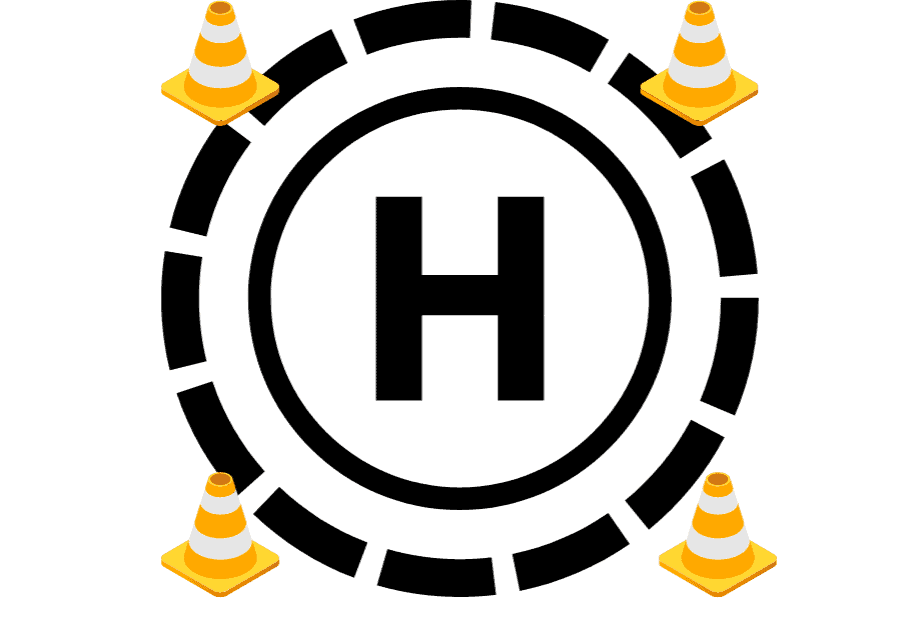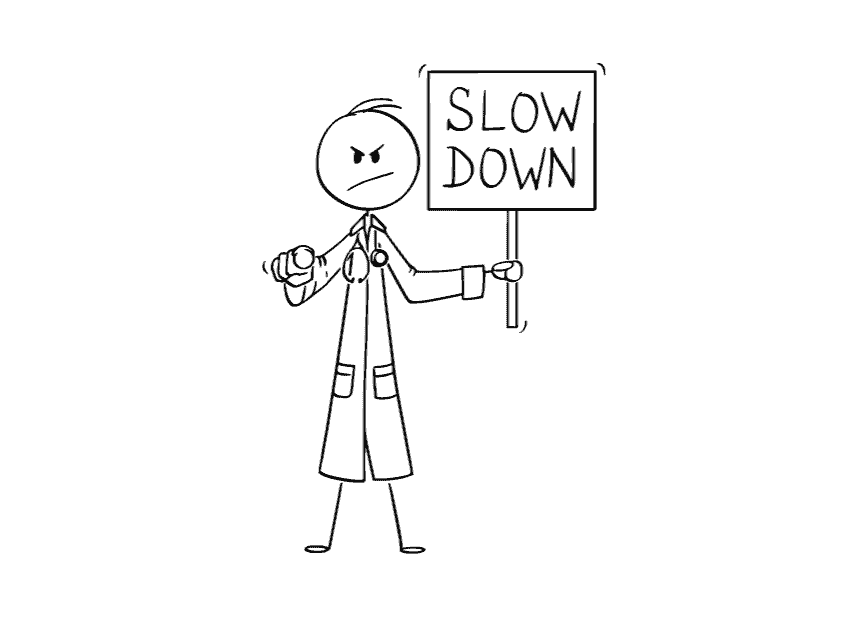I believe there’s a huge potential business market for indoor drone flights. We typically use a
You can definitely fly a Phantom 4 Pro indoors. The phantom 4 Pro is a medium size drone, so only fly it in buildings greater than 5000 sq-ft feet and with ceiling heights greater than 12-ft. FAA regulations do not apply to indoor flights, but we recommend specific safety protocols, drone settings, and accessories to ensure a successful mission.
We will review what you need to know in this article.
The Phantom 4 Pro is not intended for indoor flight. The drone obstacle avoidance sensors can be easily fooled by indoor obstacles like furniture, lampshades, and ceiling fans. If you decide to fly indoors then there are several things to keep in mind.
First, the Phantom 4 Pro has a wingspan of about 33 inches, so we recommend a ceiling height of at least 12 feet. Second, you will not have a GPS connection indoors so you will need experience flying in ATTI mode. Finally, you will likely be flying over people so you need a rigorous set of safety protocols.
This article assumes your doing a commercial job, however, most of the recommendations also apply to recreational flights. For information on starting your business see our article “How To Start A Drone Photography Business“
When To Fly Your Phantom 4 Pro indoors
According to the FAA, indoor space is defined as any area enclosed by a roof. That encompasses a very wide range of structures from small condos to shopping malls to the Superdome. Our general recommendation is to the smallest drone possible for indoor jobs, however, we have established some basic rules of thumb for what types of drones to use in different buildings.

The
Drone Settings For Phantom 4 Pro Indoor Flights
There are several important drone settings we recommend for all indoor flights.

Hover Response
Always maintain manual control, and do not use any intelligent flight mode or automated flight software when flying doors. In the event of remote control loss or any emergency, occurrence set the drone response to “Hover” in place. Do not set any “Return To Home” responses, as this will cause you to lose manual control of the drone.
Tripod Mode
Fly the drone in Tripod mode. Tripod mode limits the maximum speed of the drone to 5.6 mph and also reduces the braking distance. This mode is intended for situations where you need to slow and steady movement of the drone which is the case when flying indoors.
Attitude Mode
Phantom 4 Pro has three flight modes: P-mode, S-mode, and A-mode. We recommend flying the drone in A-mode (Attitude), in this mode does not look for GPS and the visual positioning sensors are turned off.
Collision Sensors
We recommend that you turn off the anti-collision sensors. You may want the freedom to fly unusually close to objects flying and doors, and the anti-collision sensors will prevent you from doing this. Be aware if you fly in tripod mode the anti-collision sensors will turn on, so this is a choice you’ll have to make.
Phantom 4 Pro Safety Protocols For Indoor Flights
FAA drone regulations do not apply to indoor flights. Indoor spaces are not defined as part of the US national air space, so none of the FAA rules and regulations apply. Indoor space is defined as any area enclosed by a roof. However, the drone geo-fencing may restrict your flight, in which case you’ll need to request special authorization from your drone vendor.
Federal Aviation Administration Rules For Indoor Flights
The FAA has established a rigorous set of rules and regulations for commercial drone flight in US air space. However, these rules and regulations do not apply to indoor flights. In our opinion this represents a glaring oversight because indoor flights place your drone in close proximity to pedestrians, making it particularly dangerous. Indoor flights do not require a commercial license, and they do not require that you report incidents to the FAA.

The situation places additional responsibility on you as the pilot. You must take special care to ensure that no one is injured during the flight in addition to ensuring that you’re able to successfully capture the footage you need.
Here are our recommendations for some basic mission safety protocols to help in sure you have a successful mission.
Indoor Flight Pre-Mission Protocols
Coordinate with management– Meet with building management to identify times of low pedestrian traffic. These are the best times to plan your drone flight so that you fly over as few people as possible.
Site survey – Do a pre-mission walk-through of the area, walk the path you intend to fly and identify alternate landing locations in case of emergencies.
Define Takeoff Area – Use a landing pad and pylons to define it takeoff area with a radius of at least 5 to 7 feet. It sure the takeoff area is in a place where there is no pedestrian traffic.

Check Settings – Do a final check of all your drone settings before taking off.
Wear Identification – Wear a safety vest and display your commercial pilots license to ensure everyone will know who is in charge of the drone in case of emergency.
Indoor Flight Mission Protocols
Manual Operation – Always maintain manual control of the drone, do not use intelligent flight modes. Do manual takeoff and land as opposed to automated takeoff. You would want to control the initial height of the drone, and you want the ability to quickly abort if necessary.
Once the flight is completed use manual control to return to the landing pad. Do NOT use the Return-to-Home (RTH) function.
Go slow – Even though the air to us will be in Tripod mode, use very light pressure on the control sticks. Walk directly behind your drone so that you have a clear vision of the drone and any potential obstructions. Beware of where you’re walking, you do not want to fall and drop your remote control.

Avoid Updrafts – Maintain at least 3 feet separation between the drone in the ceiling, the pillars can generate updrafts if the drone gets too close to the ceiling. Avoid large ceiling fans and vents as these can create a draft or downdrafts that will cause sudden changes in drone altitude.
Stay Focused – Let’s face it wrong to pretty cool. It’s possible that someone will want to talk to you while you’re flying. Always keep your eye on the drone and minimize any conversations while flying.

Phantom 4 Pro Accessories for Indoor Flight
Lightwave Aerial is a professional drone service company based in Northern Virginia. Our pilots are all FAA Part-107 certified. We offer a full range of aerial photo/video production services, aerial mapping, and aerial inspection.
At Lightwave Aerial, we are dedicated to providing professional drone services that help our clients achieve their goals. Contact us today to find out more about how we can help you with your next construction project!

